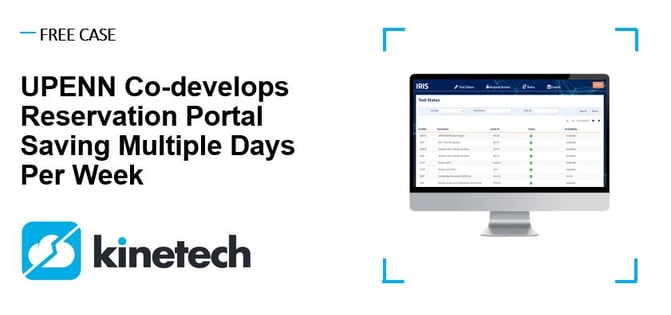Background:
The University of Pennsylvania’s Quattrone Nanofabrication lab needed to improve its equipment reservation system. The lab’s leaders needed to get a new solution up and running before they moved into the new facility, and had a limited budget for the project. They ruled out adding an off-the-shelf solution due to the excessive cost and did not want to request the university IT department because traditional code-based development would take too long to complete.
Challenge:
Before the grand opening of the Singh Center for Nanotechnology, Noah Clay, the director of the center had a problem. How could his team manage the secure reservations, usage reports, and billings of the equipment for the new research facility? Scheduling for the equipment in the past was done using an old conference room calendaring application. Billing was done using Excel, some records were still entered on paper logs, and changes in user authorizations had to be done manually.

Solution:
Clay, a former lab leader at Cornell and Harvard, had experience working with more advanced billing, reporting, and reservation systems – and he set out to upgrade the apps at Penn. He looked into off-the-shelf software, but the customization needed would have been cost prohibitive and did not meet the extremely tight timeline. Internal IT developers at Penn could have created apps that performed the functions, but they estimated it would have taken more than a year. Clay needed another solution.
Clay turned to Kinetech’s professional services team and Mendix's application platform, to create a single integrated application that would run all billing, equipment reservation and analytics for the lab. The app would replace all the legacy systems that handled these functions. He needed to move quickly, to get the new system up and running when his lab moved into a new central location in the spring. The team built the app in February, ran tests in March and had it deployed by early April. He also needed to have it fit into a tight budget.




